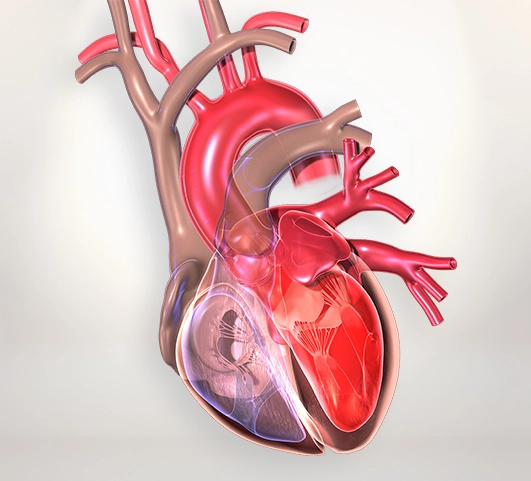


At Artemis Cardiac Centre, we seamlessly strive to provide the finest treatments and services to ensure the best possible care for your heart. Our experts specialize in a wide gamut of leading-edge medical techniques and procedures like Percutaneous Aortic Valve Replacement. Our experts will guide you, every step of the way, for a hassle-free experience backed by quality and precision
Our team strictly adheres to personalized treatment plans because we believe that every individual has unique medical requirements. Throughout your journey from treatment to recovery, we ensure your medical needs are being catered to with a robust approach.
ENQUIRE NOW

Also known as Transcatheter Aortic Valve Replacement (TAVR), percutaneous aortic valve replacement is a Minimally Invasive procedure that is widely recommended for patients with a defective aortic valve that has been damaged beyond repair. The procedure is usually performed when other non-invasive treatments have failed to give enough relief from the symptoms.
The aortic valve is the major valve from where oxygenated blood leaves the heart. If it is not functioning optimally, it can disrupt the flow of blood to different areas of the body and put increased pressure on the heart. Percutaneous aortic valve replacement helps to address the problem by allowing doctors to replace the dysfunctional valve with a new, prosthetic valve. It is a comparatively new technique, however, it is widely recommended due to its amazing results.
Percutaneous Aortic Valve Replacement procedure is the standard treatment method used for the management of aortic stenosis. The procedure is used for patients with moderate to severe stenosis, who have stopped responding to conservative treatments.
Percutaneous Aortic Valve Replacement is broadly classified and based on the technique that is used:
ENQUIRE NOWIt can take around an hour to 90 minutes
Most patients are discharged within 2 to 3 days
Most patients return to work within a span of 2 weeks, however, complete recovery may take longer
We have restored hundreds of patients' lives with timely angioplasty at Artemis Cardiac Care . Whether it's an emergency heart attack or a planned procedure, our cardiology team has achieved consistent, high-success rates.
Our individualized care, state-of-the-art facilities, and post-procedure care are valued by our patients. We're honored to be go-to heart care partner, providing both clinical expertise and humane healing.




Distinguished Cardiac Care Expertise
Eminent Cardiac Care Integrated with Advanced Technology
Transformed Lives with Trust and Care .
You may be recommended to go for angioplasty if you are experiencing any of the following symptoms linked to coronary artery disease, which are not responding to medication and lifestyle modifications:

If the aortic valve has become dysfunctional

There is an obstruction in the aortic valve

It refers to valve defect present since birth

It refers to age-related damage

Patient presents with heart failure symptoms

If you have episode of fainting

If you do not qualify for open surgery

If the patient gets tired very easily
Various Benefit of Percutaneous Aortic Valve Replacement are:
Percutaneous Aortic Valve Replacement is done under the influence of anesthesia and as such you will not feel any pain. Mild soreness and discomfort may be experienced after you gain consciousness and these can be managed with prescribed pain medication.
A prosthetic valve lasts for around 10 to 15 years in the majority of the cases. These tend to last longer in older people as compared to younger ones.
Yes, in some cases Percutaneous Aortic Valve Replacement may be repeated, if there is a complication related to the prosthetic valve.
Most people undergoing Percutaneous Aortic Valve Replacement see improvement within 4 to 8 weeks, and are able to return to normal activities.
People with severe aortic stenosis, who have stopped responding to conservative treatments, are best candidates for Percutaneous Aortic Valve Replacement. However, some pre-operative assessments may be needed to make sure there are no contradictions.
From Recent Advancements in Heart Care to Tips and Tricks to make your Heart Healthy Again, stay updated with reliable and informative blogs by our experts.
View All Blogs

